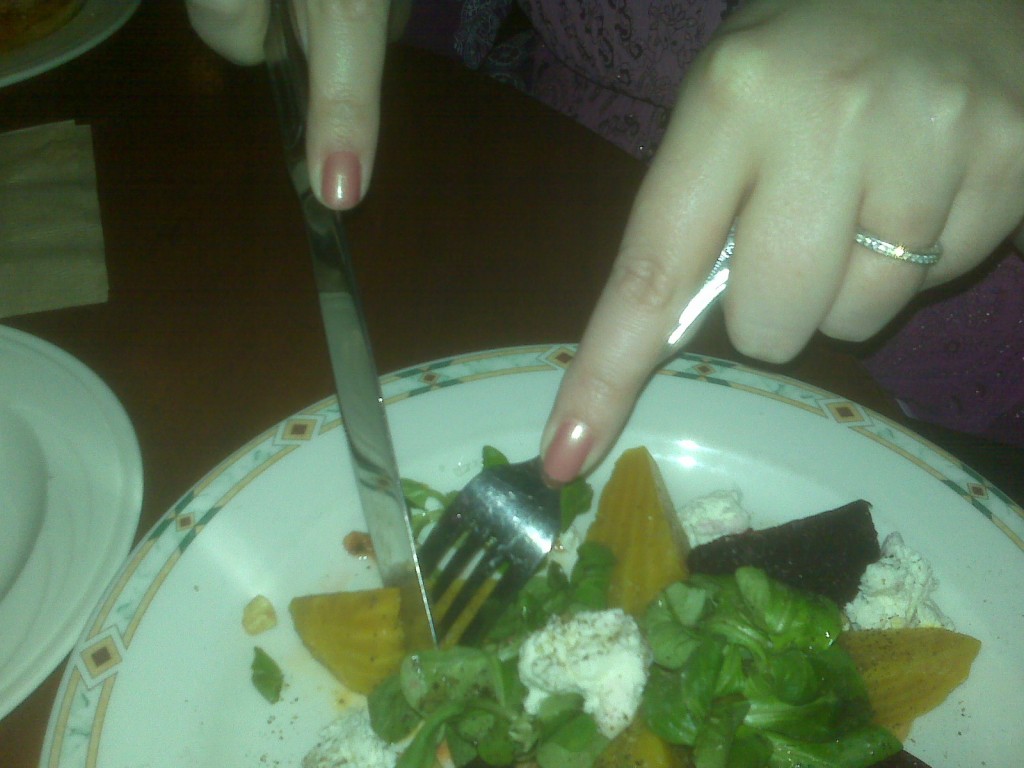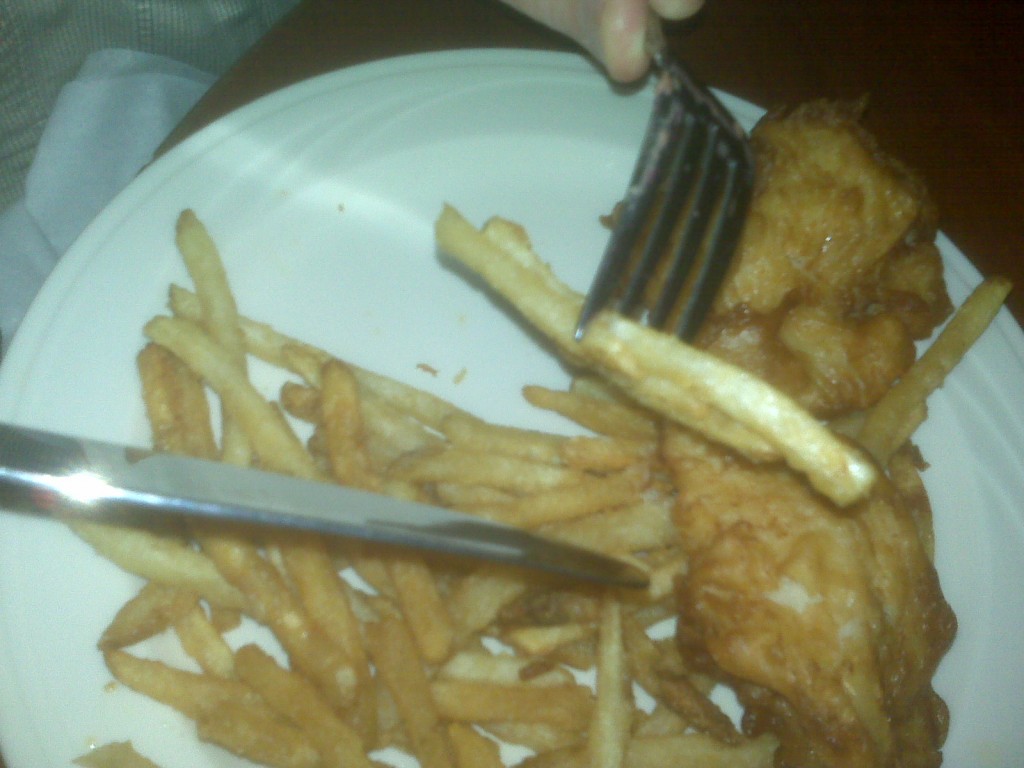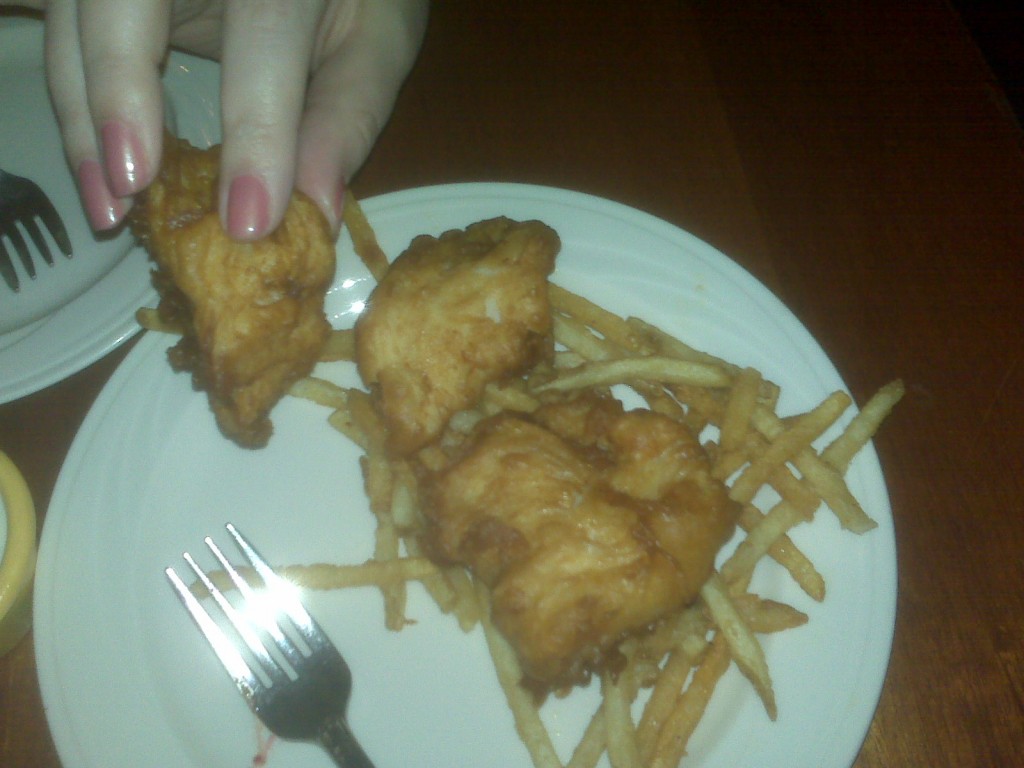Any American traveling in England needs to remember that, despite the shared language and many other bonds, the two cultures can be quite foreign to one another. And one of the times that becomes most clear is when they sit down to share food.
 People in the two nations have different ways of holding their knives and forks – and each nation is convinced that its own is the proper way of doing it, while the other is uncouth. Perhaps because the use of modern silverware began on both sides of the Atlantic later than the colonization of the New World, the customs evolved independently, with very different results.
People in the two nations have different ways of holding their knives and forks – and each nation is convinced that its own is the proper way of doing it, while the other is uncouth. Perhaps because the use of modern silverware began on both sides of the Atlantic later than the colonization of the New World, the customs evolved independently, with very different results.
Every American child has been taught that you pick up your knife only when you need to cut your food. Having carved off a morsel the way you want it, the polite thing to do is to lay down your knife and pass the fork to the right hand before transferring the food to your mouth. After all, it would be a little savage to be wielding a knife the whole time. And to shove the food into your face as soon as it is cut, without even taking the time to move your fork to what is, for most people, the more dexterous hand, would be a sign of unseemly haste.
Not that all Americans stick to these rules at all times. I saw an American TV show in which a character held his knife in his right hand and his fork in his left hand throughout his meal. This was evidently meant to tell the viewer how ravenous he was, and how little time he had for social niceties.
 And yet in England, that is considered genteel. In common with other Europeans, the English believe that to sit down to a meal with an item of silverware – or cutlery, as they call it – permanently ensconced in each hand is to accord the meal its due respect. To them, the spectacle of someone picking at their plate while only holding their fork looks slovenly, as if one were half-hearted about the dining experience. In particular, when someone chops up a large amount of food into small pieces at the beginning, and then proceeds to eat these with a fork, the English see this as babyish, as it reminds them of the way small children need to have all their food sliced up before they can start eating.
And yet in England, that is considered genteel. In common with other Europeans, the English believe that to sit down to a meal with an item of silverware – or cutlery, as they call it – permanently ensconced in each hand is to accord the meal its due respect. To them, the spectacle of someone picking at their plate while only holding their fork looks slovenly, as if one were half-hearted about the dining experience. In particular, when someone chops up a large amount of food into small pieces at the beginning, and then proceeds to eat these with a fork, the English see this as babyish, as it reminds them of the way small children need to have all their food sliced up before they can start eating.
What makes matters worse is that – as with many things that are done differently in the two countries – the American way has become voguish among rebellious young English folk. They like to feel that they are being modern and cool by using the right-hand fork method – little suspecting that this is what American children have been painstakingly coached to do by their elders for many generations.
I have seen English people roll their eyes while groaning at the very mention of American silverware habits. I’ve even heard two English ladies, on a visit to the US, chorus “properly!” when their different way of eating was pointed out.
 And it’s not just the way silverware is used that is different, but how often. It is quite common in England to use a knife and fork to consume foods that Americans would tackle with their fingers, such as French fries, slices of pizza, or pieces of battered fish or breaded chicken.
And it’s not just the way silverware is used that is different, but how often. It is quite common in England to use a knife and fork to consume foods that Americans would tackle with their fingers, such as French fries, slices of pizza, or pieces of battered fish or breaded chicken.
All this doesn’t mean that when taking a vacation abroad, you need to adopt all the customs of the new country. A brief trip probably isn’t the time to change the habit of a lifetime. But it is worth pausing before rushing to the conclusion that people with a custom different from yours are less civilized. It’s a pretty safe bet that they think the opposite.
One final tip for a visit to England. Think twice before accepting an offer of a slice of cake. It may arrive with no fork – no silverware at all, in fact. The English often eat cake with their fingers.


Comments